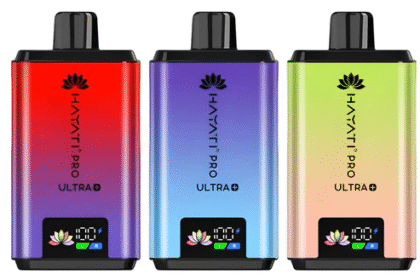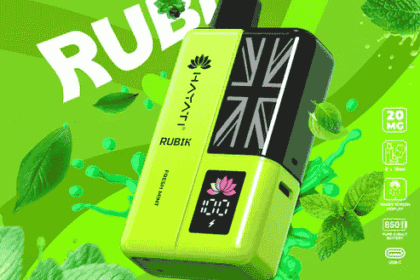Stainless Steel 304 Pipe is one of the most widely used stainless steel alloys in various industries due to its excellent properties and versatility. Whether you’re in construction, manufacturing, or food processing, understanding what Stainless Steel 304 Pipe is and why it’s favored can help you make informed decisions for your projects.
In this comprehensive guide, we will explain what Stainless Steel 304 Pipe is, explore its key uses, and highlight the benefits that make it an ideal choice across many applications
What is Stainless Steel 304 Pipe?
Stainless Steel 304 Pipe is a widely used type of stainless steel piping made from the 304 stainless steel alloy. This alloy primarily consists of iron, chromium (about 18-20%), and nickel (about 8-10.5%), which together provide the pipe with excellent corrosion resistance, high strength, and outstanding durability. Because of this unique composition, Stainless Steel 304 Pipe is suitable for a variety of demanding applications across many industries.
Belonging to the austenitic stainless steel family, Stainless Steel 304 Pipe features a face-centered cubic crystal structure. This special structure enhances its flexibility and toughness, ensuring that the pipe maintains its shape under pressure and is highly resistant to deformation. These properties make Stainless Steel 304 Pipe a preferred choice in environments where both strength and corrosion resistance are critical factors.
Key Characteristics of Stainless Steel 304 Pipe:
- Corrosion resistance: Excellent resistance to oxidation and corrosion in most environments, including atmospheric conditions and many chemicals.
- Durability: High tensile strength and ability to withstand extreme temperatures.
- Non-magnetic: Typically non-magnetic in the annealed condition.
- Good weldability: Easily welded using various methods without losing its corrosion resistance.
- Aesthetic finish: Naturally shiny and smooth, suitable for visible installations.
Common Uses of Stainless Steel 304 Pipe
Stainless Steel 304 Pipe’s combination of strength and corrosion resistance makes it suitable for a vast range of applications. Here are some of the most common uses:
1. Construction and Architecture
- Used extensively in structural applications, handrails, and support columns due to its strength and polished finish.
- Ideal for external piping and architectural cladding where weather resistance and appearance are important.
2. Food and Beverage Industry
- Preferred in food processing plants for transporting liquids, chemicals, and other materials.
- Its hygienic surface prevents contamination, and it resists acidic and alkaline cleaning agents.
3. Chemical and Petrochemical Industry
- Employed in pipelines carrying corrosive chemicals thanks to its resistance to chemical corrosion.
- Often used in heat exchangers and condensers.
4. Pharmaceutical and Medical Equipment
- Used in manufacturing sanitary piping systems where contamination-free operation is essential.
- Common in hospital and laboratory equipment due to its non-reactive surface.
5. Automotive and Aerospace Applications
- Used for exhaust systems, fuel lines, and other components requiring resistance to heat and corrosion.
- Preferred for its light weight and strength.
6. Water Treatment and Desalination Plants
- Used in piping systems to transport potable water and in wastewater management because it resists corrosion from chlorides and other chemicals.
Benefits of Stainless Steel 304 Pipe
Choosing Stainless Steel 304 Pipe offers many advantages over other materials. Here are some critical benefits:
1. Exceptional Corrosion Resistance
One of the standout benefits of Stainless Steel 304 Pipe is its excellent resistance to rust and corrosion. The chromium in the alloy forms a thin, protective layer of chromium oxide on the surface that prevents oxidation and damage.
This corrosion resistance makes it ideal for:
- Outdoor and marine environments
- Chemical exposure
- High humidity and moisture-prone areas
2. High Strength and Durability
Stainless Steel 304 Pipe can withstand significant mechanical stress and high pressure without deforming or breaking. Its toughness allows it to perform well in:
- High-pressure steam lines
- Structural support systems
- Industrial machinery
3. Thermal Resistance
This type of pipe can operate effectively in a wide range of temperatures, from cryogenic levels up to about 870°C (1600°F). It also maintains strength and corrosion resistance under elevated temperatures.
4. Ease of Fabrication and Welding
304 stainless steel’s austenitic structure makes it easier to fabricate, cut, bend, and weld compared to other stainless steels. It retains its corrosion resistance even after welding, which is essential for complex piping systems.
5. Low Maintenance
Due to its durability and corrosion resistance, Stainless Steel 304 Pipe requires minimal maintenance. Unlike carbon steel pipes, it doesn’t need painting or coating, reducing the overall cost of upkeep.
6. Hygienic and Easy to Clean
Its smooth surface resists bacteria and contaminants, making Stainless Steel 304 Pipe perfect for food, beverage, and pharmaceutical industries where hygiene is crucial.
7. Aesthetic Appeal
Stainless Steel 304 Pipe offers a bright, polished finish that maintains its look over time. This is particularly beneficial for exposed piping in architectural and decorative applications.
Why Choose Stainless Steel 304 Pipe Over Other Materials?
When selecting piping materials, it’s essential to weigh the pros and cons against your project requirements. Here’s why Stainless Steel 304 Pipe often outperforms alternatives:
Compared to Carbon Steel Pipes:
- Stainless Steel 304 offers superior corrosion resistance.
- Longer lifespan with less risk of rust or scale formation.
- Better suited for sanitary or food-grade applications.
Compared to Other Stainless Steel Grades:
- Grade 304 balances cost and performance better than higher grades like 316 for most standard applications.
- It provides excellent corrosion resistance without the added cost of molybdenum found in 316.
Maintenance Tips for Stainless Steel 304 Pipe
Although Stainless Steel 304 Pipe is low maintenance, following simple care steps can extend its life:
- Regular cleaning: Use mild detergent and water to remove dirt and contaminants.
- Avoid harsh chemicals: Minimize exposure to chlorides or strong acids that may cause localized corrosion.
- Inspect welds: Periodically check welded joints for any signs of cracking or corrosion.
- Prevent physical damage: Protect pipes from dents or scratches that can compromise the surface.
Conclusion
Stainless Steel 304 Pipe stands out as a reliable, durable, and versatile piping solution across many industries. Its excellent corrosion resistance, strength, and hygienic properties make it a top choice for construction, food processing, chemical, pharmaceutical, and water treatment applications.
Choosing Stainless Steel 304 Pipe means investing in a long-lasting, low-maintenance material that ensures safety, efficiency, and aesthetic appeal.
For high-quality Stainless Steel 304 Pipes tailored to your industrial needs, always rely on trusted suppliers who offer certified materials meeting international standards.


